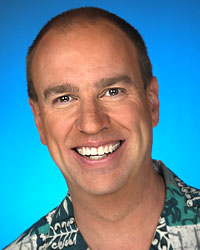 I have a confession to make: I love Sudoku.
I have a confession to make: I love Sudoku.In its third year as a come-from-nowhere fad in the United States, the fill-in-the-numbers game that looks like a bad marriage between a crossword and a 1040 tax form is still growing. I dare you to open a newspaper comics section and not find one. Every flight I take, there’s one in the seat-pocket airline magazine. There are workplaces that have banned it because of its power as an addictive time-waster.
My obsession with Sudoku began on a Cape Cod vacation in 2005, where the owner of the B&B where we stay was printing them on his computer for guests to play. I’ve since turned my Dad onto the craze, too.
Sudoku has the characteristics of a successful puzzle; accessibility, simplicity and the ability to engage people intellectually without regard to their education. Some people, put off by numbers (math-phobics,) prefer Sudoku puzzles that use letters of the alphabet, colors, shapes, or celebrities.
The puzzle is deceptively simple. It's like a checkerboard, nine across and nine down, sub-divided into nine squares of nine each, three across and three down. Each puzzle starts with certain numbers filled in various spots across the grid, either randomly or sometimes in a pattern that's unrelated to the game's solution. Using those filled-in numbers and the game's only three rules, the puzzle solver must fill in every square in the grid with a number from one to nine.
The rules are as basic as you can get:
No column (a vertical line of squares) can have the same number more than once;
no row (a horizontal line of squares) can have the same number more than once;
and no sub-grid can have the same number more than once.
That's it, but it can be a challenging game that exercises your brain and patience. And it’s good for you! Studies have shown puzzles, like Sudoku and crosswords, keep the mind nimble and potentially ward off dementia.
Based on the Viennese square, a mathematical construct by the 18th-century Swiss mathematician Leonhard Euler, Sudoku, originally called Number Place, was invented in 1979 by Indianapolis man Howard Garns, who, like Rubik of Rubik's cube fame, was an architect. It was published in a puzzle magazine, but it didn't catch on. In the 1980s, a Japanese publisher took the idea, modified it slightly and popularized it under a lengthy Japanese name, suuji wa dokushin ni kagiru, meaning roughly “each ofthe numbers must occur only once,” shortened to Sudoku. In 1997, retired New Zealander Wayne Gould noticed a Japanese Sudoku book and was intrigued. He developed a computer program to create Sudoku puzzles and pitched it to the Times of London which began printing them in 2004. By 2005, both the United Kingdom and the United States were fully infected with Sudoku fever.
A listing from the 100 most annoying things about 2006
Though millions enjoy this crazy fill in the numbers game ever day, they're blissfully unaware that it's the Japanese word for "Puzzle Substitute For Friends."
Though millions enjoy this crazy fill in the numbers game ever day, they're blissfully unaware that it's the Japanese word for "Puzzle Substitute For Friends."
Add it to your 'Favorites' list today. It's one of the few things that can distract me from the hijinks in politics.



No comments:
Post a Comment